As a first-time mother who has been co-sleeping with my daughter since birth, I can share first-hand the wonders it has worked for both our sleep and my sanity. There’s something instinctive about wanting to keep our babies close at night, ensuring they are safe and protected. Fighting this urge can lead to anxiety and sleepless nights for many new parents. But fear not, co-sleeping can be done safely, and I’m here to guide you through it, dispelling myths and highlighting the benefits along the way.
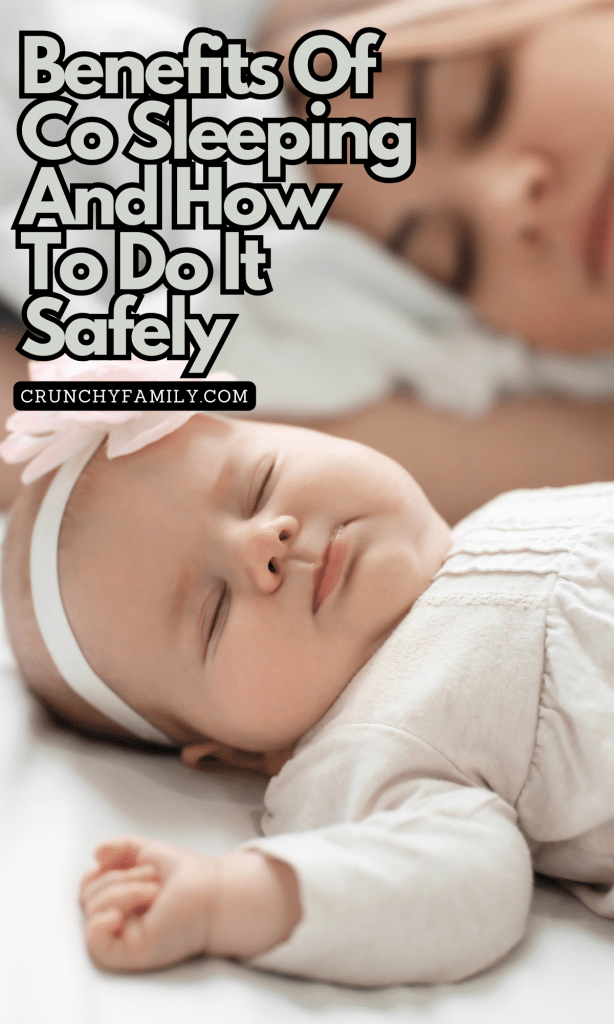
The Benefits of Co-Sleeping
Co-sleeping is more than just sharing a bed; it’s a practice that can enhance the overall well-being of both the child and the parents. Beyond the initial bonding and convenience, there are several other advantages worth noting:
- Emotional Security: For the baby, being close to their parents throughout the night provides a sense of security and comfort. This emotional closeness can help reduce stress levels in infants, contributing to their emotional development and fostering a sense of safety and trust.
- Easier Breastfeeding: This was a game-changer for my breastfeeding journey and made it so much more enjoyable. Co-sleeping supports a breastfeeding family by making night feeds more manageable and less disruptive. The proximity allows mothers to respond to their baby’s hunger cues more quickly, which can encourage more frequent feedings and support the establishment of a stronger breastfeeding relationship.
- Improved Sleep Quality: While it might seem counterintuitive, many parents report better sleep quality when co-sleeping. The ease of attending to a baby’s needs without fully waking up and the reduced anxiety about the baby’s well-being can lead to more restful sleep for parents. I slept so much better knowing she was close to me.
- Synchronization of Sleep Cycles: Co-sleeping can help synchronize the sleep-wake cycles of the parent and the baby. This synchronization can make it easier for the mother to anticipate the baby’s needs and respond to them promptly, which is particularly beneficial during the critical months of life.
- Long-term Positive Outcomes: Research suggests that children who have experienced co-sleeping may develop strong independence and self-esteem as they grow older. The constant physical presence of a parent during the night can build a foundation of security and self-confidence.
- Facilitates Parental Rest: New parents, especially, can find co-sleeping a practical arrangement that allows for better rest. Instead of walking to a separate room multiple times a night, parents can attend to their baby’s needs quickly and easily, which can be particularly beneficial during the exhausting newborn phase.
- Cultural and Historical Precedence: In many cultures around the world, co-sleeping is the norm rather than the exception. Historically, it has been a natural part of family life, providing not just practical benefits but also fostering a sense of community and belonging.
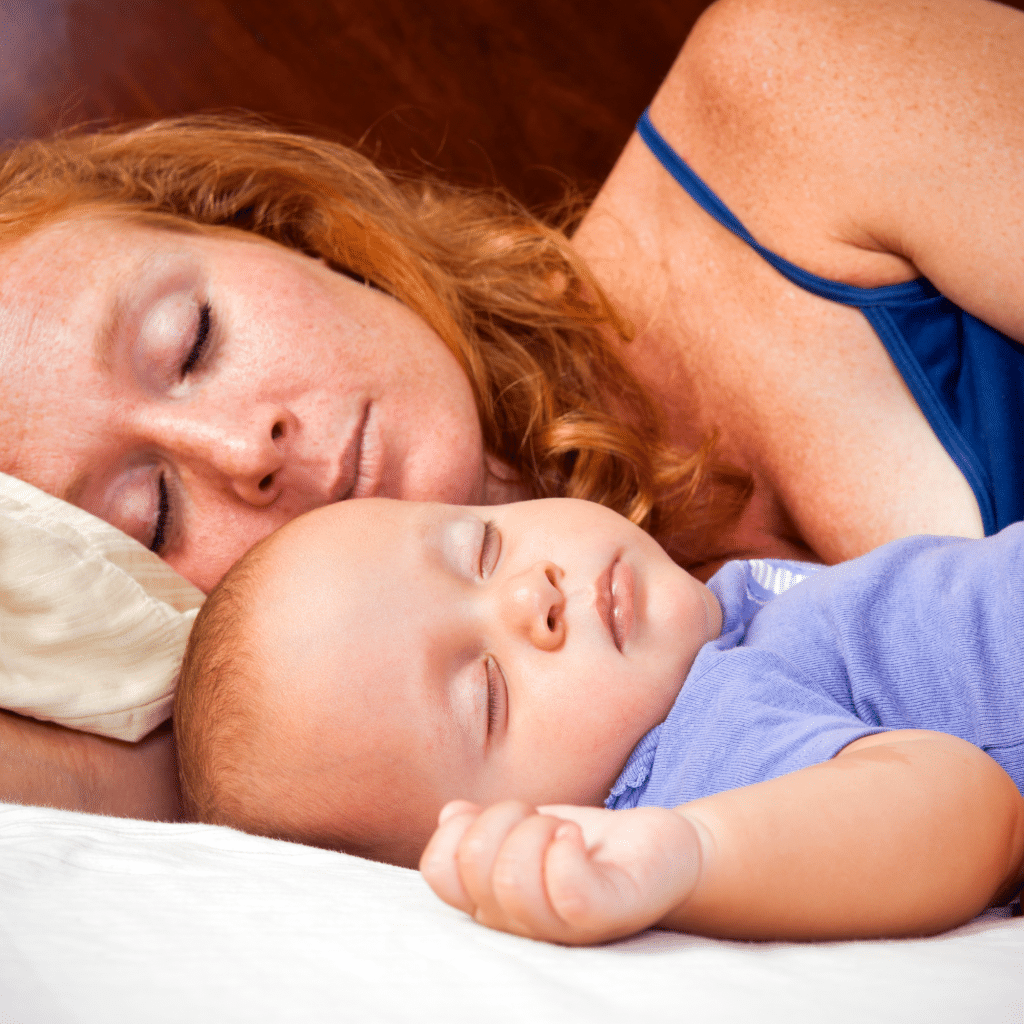
Incorporating co-sleeping into family life can offer a variety of benefits that extend beyond the convenience of nighttime feedings and soothing. It supports the natural rhythms of parenting, aligning with the instinctual practices that have nurtured human development for centuries
Safe Positions for Co-Sleeping
When it comes to co-sleeping, the position in which your baby sleeps is crucial to minimize the risk of sudden infant death syndrome (SIDS) and suffocation. The medical community and organizations that provide safe sleep guidelines, emphasize the importance of creating a safe sleeping environment. Here are some safety tips and best ways to ensure your baby sleeps safely in the family bed:
- Supine Position: The safest sleeping position for a newborn baby is the supine position, lying on their back. This position reduces the risk of SIDS and is recommended by healthcare professionals in the United States and worldwide. Babies should be placed on their backs to sleep, not on their stomachs or sides.
- Cuddle Curl: A lot of mothers find the cuddle curl position natural and protective. In this position, the mother lies on her side, with her knees bent and her bottom arm stretched outwards. This creates a protective space around the baby, who is also on their back, and minimizes the risk of rolling over onto the baby. It’s akin to forming a nest or a cup of tea shape around the child, offering a snug and secure space.
- Separate but Close: While bed-sharing has its benefits, the safest place for a baby to sleep during the first months of life is in their own sleep space, such as a baby crib, babybay co-sleeper, or a safe cot placed in the parents’ room. This setup allows for the benefits of close proximity, like easier nighttime feedings and comforting, while giving the baby their own safe sleeping environment.
- Avoid Overheating: The room temperature where the baby co-sleeps should be comfortable, ideally around 68-72 degrees Fahrenheit. Overheating increases the risk of SIDS, so it’s important to ensure the baby is dressed appropriately and not covered with heavy blankets.
- Keep the Space Clear: Ensure there are no pillows, loose bedding, or soft toys near the baby’s sleep area. These items can increase the risk of suffocation and should be kept away from the baby’s crib or bed space.
- Long Hair and Loose Items: Parents, especially those with long hair, should tie their hair back to prevent any risk of it wrapping around the baby’s neck. Similarly, avoid having loose items like strings or cords that could pose a strangulation risk.
- Considerations for Older Children and Smokers: If a partner smokes or there are older children in the bed, the increased chance of SIDS and suffocation risks should be seriously considered. In these cases, ensuring the baby has their own safe sleep tool, like a separate crib or co-sleeper in the same room, is even more critical.
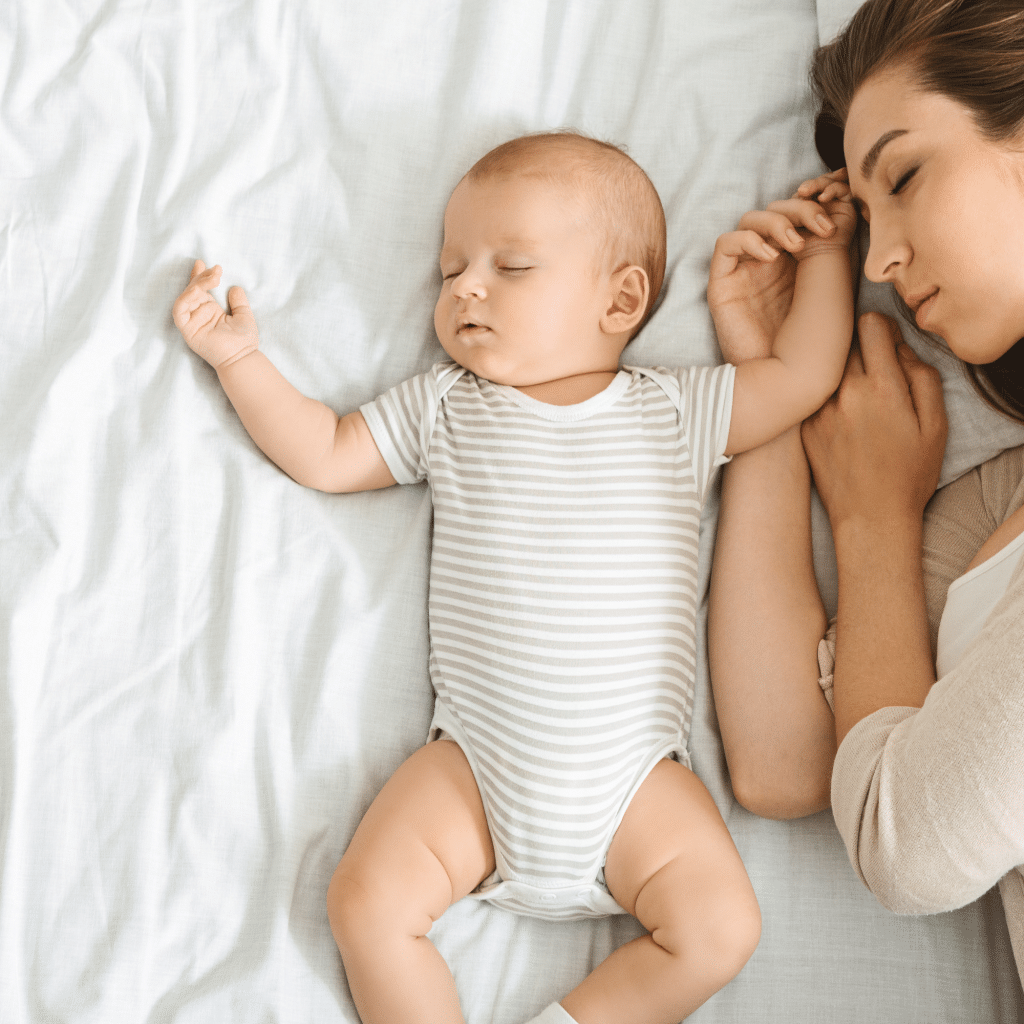
Following these safety guidelines and tips can help create a safer bed-sharing and co-sleeping experience, aligning with the best practices for safe infant sleep. It’s essential to stay informed through reliable sources and medical advice to ensure the well-being and healthy development of your baby in the shared family bed.
How to Co-Sleep Safely
Many health organizations provide guidelines to minimize the risks associated with co-sleeping, such as the risk of SIDS (Sudden Infant Death Syndrome) and suffocation. Here are some key points to ensure safe co-sleeping:
- Create a Safe Sleep Environment: Use a firm mattress in the adult bed, ensuring there are no gaps between the mattress and the bed frame where the baby could get trapped. The safest place for a baby to sleep is on their back, in a crib or bassinet that meets current safety standards, but if bed-sharing, make sure the sleep surface is flat and free of pillows, blankets, and toys that could increase suffocation risks.
- Consider a Bedside Co-Sleeper: A bedside sleeper or a Moses basket that attaches to the side of the bed allows your baby to have their own safe sleep space while still being within arm’s reach. This setup provides the benefits of close proximity with the added safety of a separate sleep surface.
- Mind the Bed Space: Ensure your bed provides ample space for all occupants. A king-size bed may offer more room.
- Avoid Risk Factors: Bed sharing becomes riskier if either parent smokes, consumes alcohol, uses drugs, or is excessively tired. These factors greatly increase the risk of SIDS and suffocation.
- Position and Bedding: Keep the baby’s head uncovered during sleep and avoid using loose bedding or soft objects that could lead to overheating or obstruct the baby’s airway. A sleep sack can be a good alternative to blankets.
My Personal Journey

In my own journey into the world of co-sleeping, I found inspiration from various sources, one of which was a video by Mayim Bialik, neuroscientist and mum. Her approach really stuck with me. Mayim, known for her advocacy of attachment parenting, shares how she integrates co-sleeping as a core element of this parenting style. She explains that while she carries her children in a sling throughout the day to maintain close physical contact, nighttime presents a different challenge. To continue this close bond during the night, Mayim practices co-sleeping, which is a natural extension of attachment parenting.
Mayim and her children sharing a bedroom resonated with me. It highlighted the natural aspect of co-sleeping, showing that it’s not just a temporary arrangement for when children have nightmares or need comfort, but a consistent practice that can benefit the family. The advantages, as Mayim points out, include better sleep for the children and easier nighttime feedings, which I found to be true in my experience as well.
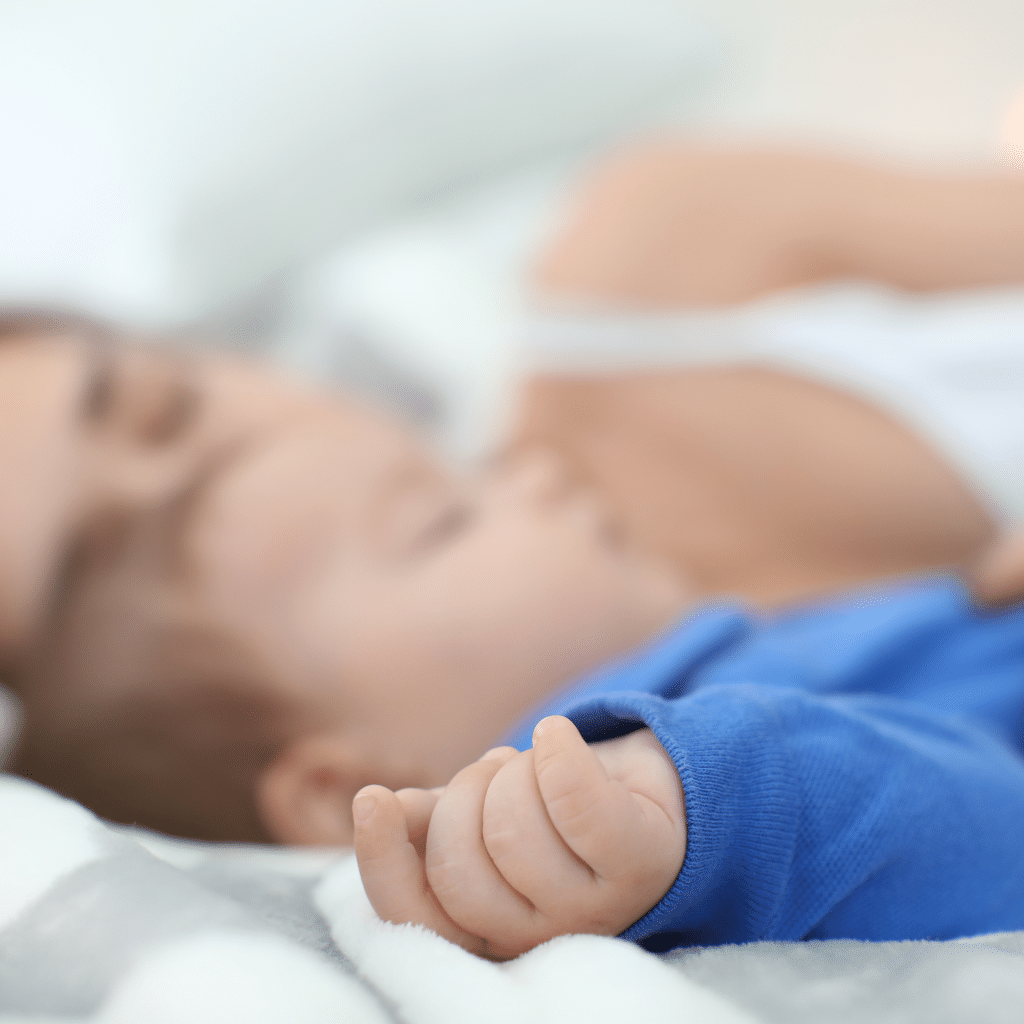
However, Mayim also touches on a potential concern: the possibility of separation anxiety when it’s time for the children to transition to their own beds. Interestingly, she expresses confidence that this transition will occur naturally when the time is right. This perspective was particularly comforting to me as a first-time mother. It reinforced my belief that co-sleeping was not just a stop-gap solution but a meaningful phase in the early years of my child’s life.
Incorporating these insights into my co-sleeping practice, I felt more assured in my decision. Like Mayim, I experienced the profound benefits of co-sleeping, such as enhanced bonding and improved sleep quality for both my daughter and me. And just as Mayim predicted, the transition to my daughter sleeping in her own bed happened naturally and without the anxiety I feared.
This journey has taught me the importance of trusting my parental instincts and the natural developmental process of my child. Co-sleeping, in my experience, has been a beautiful part of our family’s journey, providing not just restful nights but also a deeper connection and understanding between us.
Co-sleeping, when done safely, can be a wonderful way to meet your baby’s needs while ensuring they remain protected through the night. It’s about finding the right balance and setup that works for your family, always prioritizing the safety and comfort of your little one. Remember, every family is unique, and what works for one may not work for another. Trust your instincts, stay informed, and choose the safest and most loving path for your family’s sleep journey.
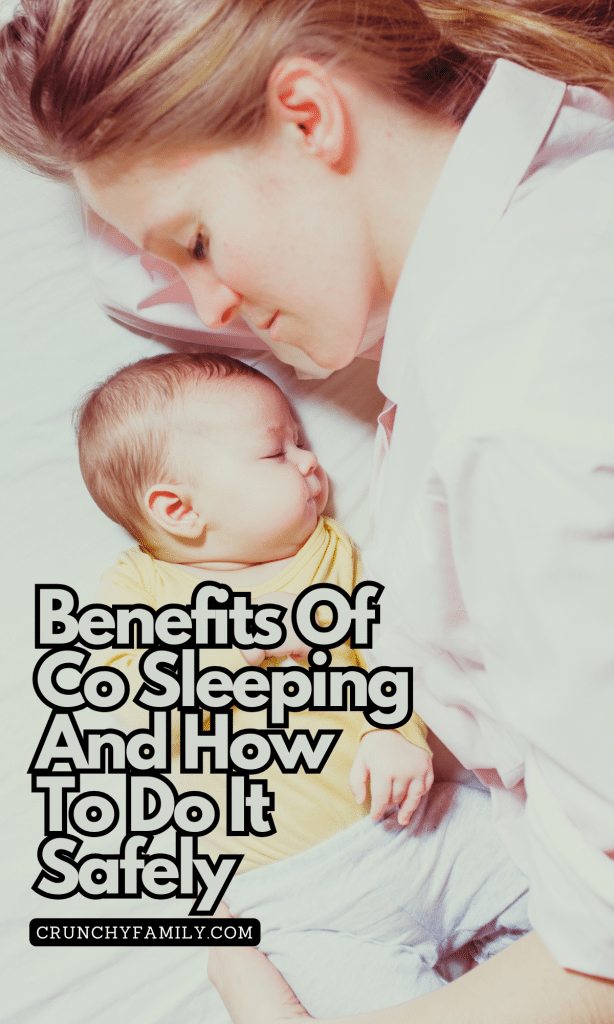
- Pros and Cons Of Extended Breastfeeding: A Personal Journey
- When Does Breastfeeding Get Easier?
- What is the 2 Shirt Method of Breastfeeding?
- Effective Emotional Regulation Games for Young Kids
- 15 Key Phrases to Embrace and Avoid with Your Child
- What is Gentle Parenting and Why Practice It with Your Kids?